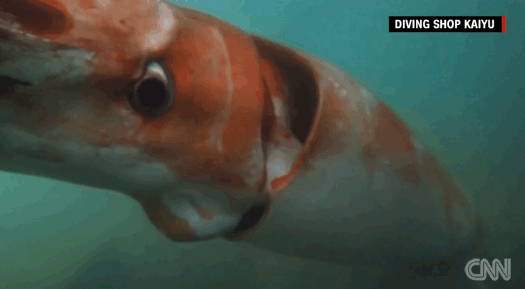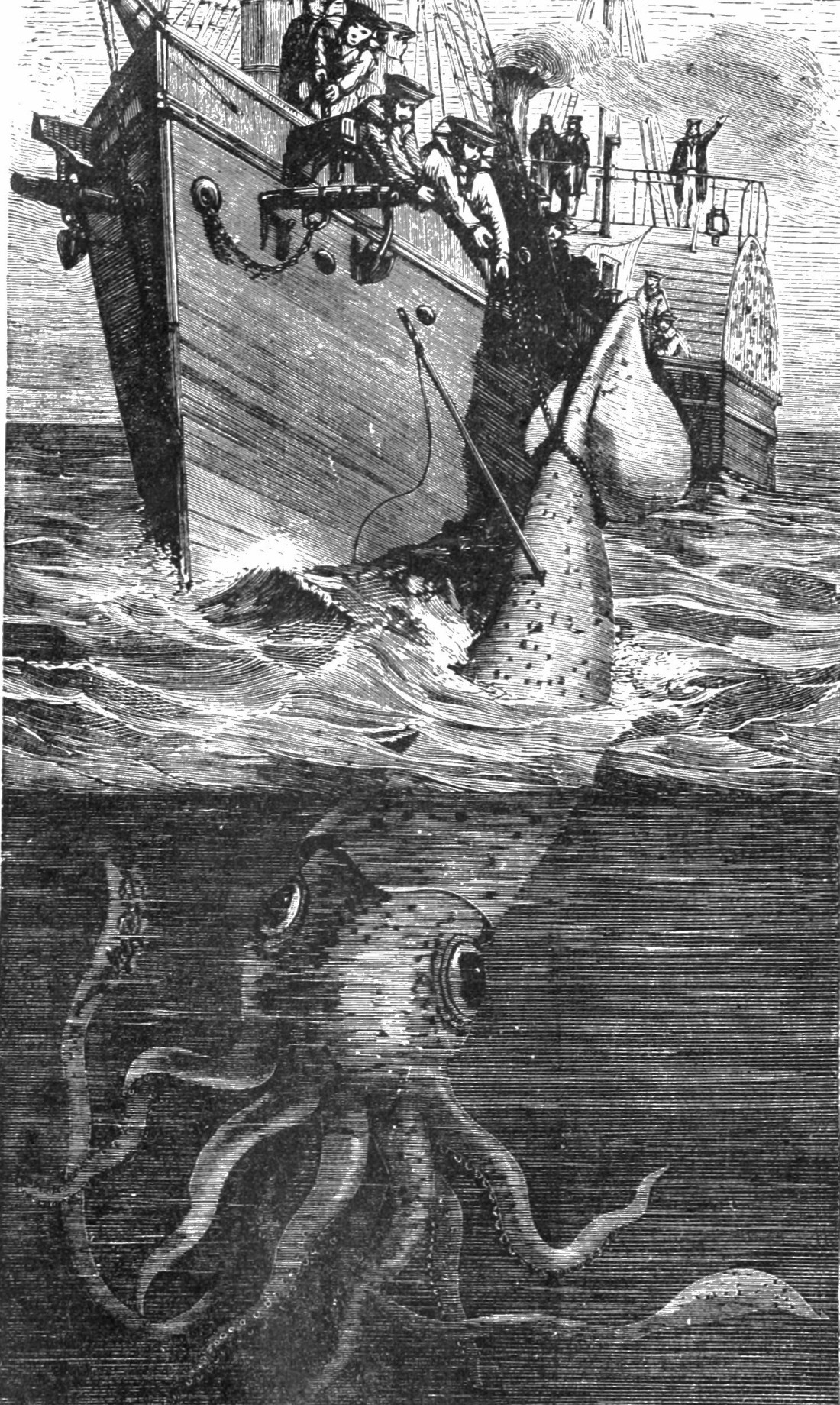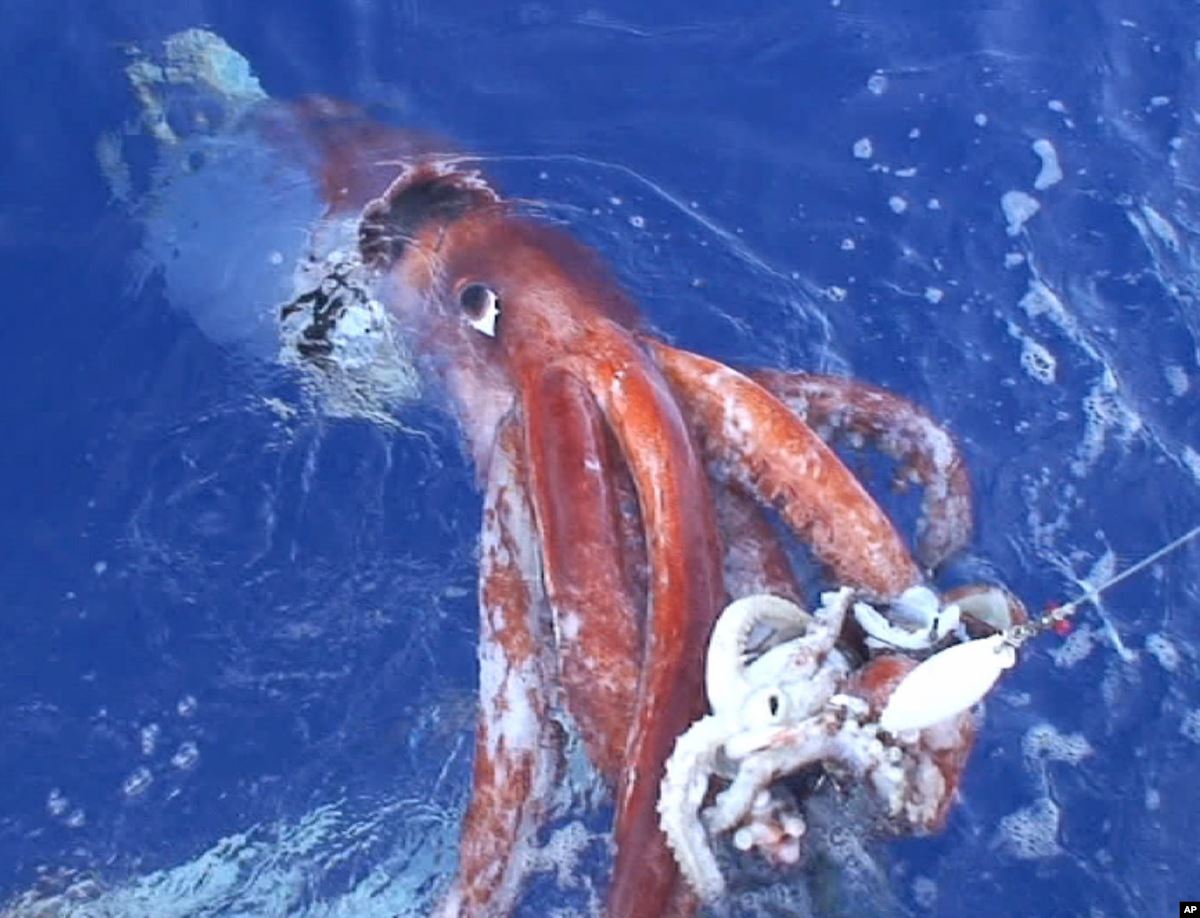“Moby-Dick or The Whale” is the book in which Captain Ahab hunts the white whale. However, the men of the Pequod encounter a more terrifying creature on their journey. Its sight makes the first helmsman, Starbuck, cry out, “I’d rather have seen Moby Dick and fought him than you, you white ghost!”

Well, the fight does not happen with Herman Melville. This is reserved for the writer colleague Jules Verne, who in his 1869 published the novel “20 000 Leagues Under the Sea” will describe just such a relish. But the horror put on the Pequod’s team by “the apparition” is deep. After all, lurking behind her no lesser than “the big squid,” as Melville enlightens the reader.
The author has carefully chosen the ghost metaphor, with which he introduces the wondrous animal to world literature twenty years before Verne and his adventurous story about Captain Nemo. For since antiquity, no other sea dwellers haunt so much in legends as the giant squid. For Melville, it sounds like this: “One sees him so seldom that everyone unanimously declares that he is the greatest living being in the ocean, but few gain more than a vague idea of his true form and nature.” Only in one do they all agree: no ship in this world is safe from the robber with his tentacles covered with suction cups.
In the novel, the squid has unbelievable dimensions and spreads fear and terror
The giant squid was considered for centuries the greatest mystery of the seas. Moreover, until the Dane Japetus Steenstrup first undertook to scientifically describe the invertebrate cephalopod on the basis of stranded carcasses in the 1850s, and then gave it the name Architeuthis dux, one could not say with certainty if it existed. By no means excluded was the possibility that the animal, which can be up to twelve meters long and has a mighty head with soccer-ball-sized eyes and a parrot-like hornbill, is merely a product of human imagination.

The first written report, which gives an indication of the real existence of the giant squid, comes from the pen of Pliny the Elder. In his “Natural History” the scholar writes of a stinking “polyp” who is said to have eaten fish in the Spanish Carteia. About his appearance, he knows to report that he is “of a foreign color” and “outrageously tall,” with ten-meter-long arms, “knotty as clubs.”
But then the Architeuthis dux, at least as far as the written tradition is concerned, has become extremely rare. Because it reappears only in the mid-16th century from its ancestral territory, the deep sea, to be found as a “monstrous fish” entrance to the “Historia de gentibus septentrionalibus” of the Swedish clergyman Olaus Magnus. “They are ten to twelve cubits long,” it says, “with huge eyes (…) with hair like goose feathers, long and thick, like a drooping beard, such a sea monster can easily cause many ships full of strong sailors to capsize “. From this flowery description, which over the decades was joined by other naturalists such as the theologian Pontoppidan, it is not far to the adornments of Melville (“a vast pulpy mass, several cables long and wide”) and Jules Verne.
Apart from the fact that the Frenchman alternates between the terms polyp, octopus and squid, although octopuses have eight, squids but ten arms (eight plus two Fang tentacles), exaggeration is his trump card. “His elongated body (…) formed a fleshy mass, which must have weighed at around 20.000 kilos,” it says. Jules Vernes’ is also to be outdone as a cinematic perpetuated monstrosity, which has nothing in common with a true architechture dux of about half a ton in weight, only by Peter Benchley. The “Great White Shark” writer gave a massive performance in the early 1990s with “Beast – Terror of the Deep”. In it, a giant squid kills “without ado, as if nature, in a fit of perverted wickedness, would have programmed him solely for this purpose.”
2004 succeeded the sensation. A Japanese team took photos of a copy for the first time
The horror stories have nothing to do with the truth. They could only emerge from the fact that, despite sometimes sinfully expensive “squid commands”, no live specimen of those majestic deep-sea dwellers could be seen in action until 2004. However, for the first time, the Japanese Tsunemi Kubodera and Kyoichi Mori managed to shoot 550 photos of an eight-meter-long Architeuthis dux in front of the Ogasawara Islands. A sensation! Until then, research relied on stranded carcasses or remains found in the stomachs of sperm whales, the ancestral enemies of cephalopods. In 2012, Kubodera even managed to shoot a copy briefly.

The recordings helped to disprove the long-established assumption that the giant squid was a lumbering hunter. The opposite is the case. But many questions, such as how he really lives in the still almost unexplored deep sea, are still open. Until we answer them, just like Melville, we will only have “a vague idea of his true form and nature.”






